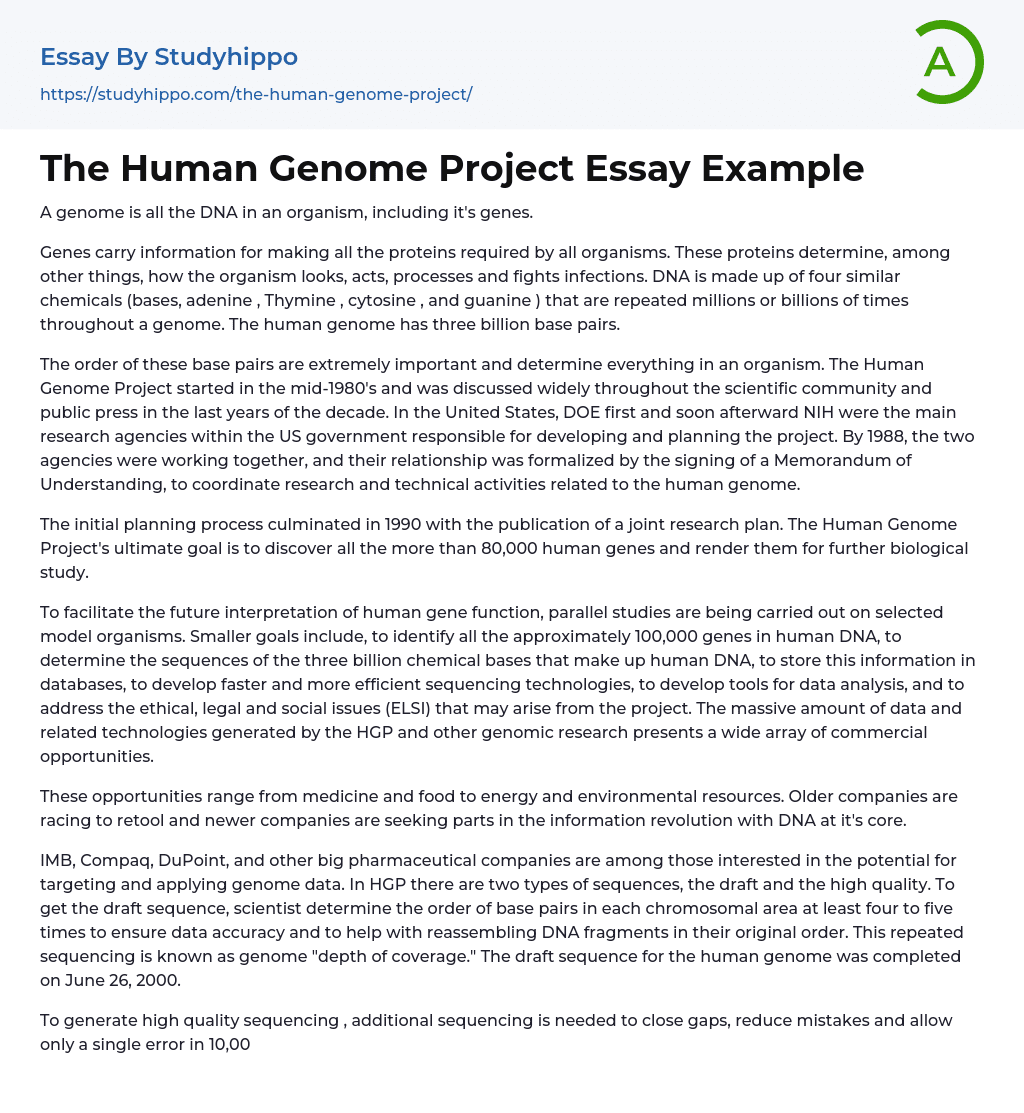The genome of an organism, which includes its DNA and genes responsible for producing proteins, determines various functions such as appearance, behavior, processing abilities, and immune response. The DNA is made up of four chemical bases (adenine, thymine, cytosine, and guanine) that repeat millions or billions of times within a genome. For example, the human genome consists of three billion base pairs that play a crucial role in determining every aspect of an organism.
The Human Genome Project began in the mid-1980s and gained significant attention from the scientific community and media by the end of the decade. The Department of Energy (DOE) and the National Institutes of Health (NIH) played important roles in planning and executing this project within the United States. In 1988, these agencies collaborated and signed a Memorandum of Understanding to coor
...dinate research activities related to the human genome.
The planning phase was completed in 1990 with the publication of a collaborative research plan. The main goal of the Human Genome Project is to identify and document all 80,000+ human genes for further analysis. Additionally, parallel studies on model organisms are being conducted by the Human Genome Project (HGP) to help interpret human gene function for future studies.
The research aims to identify all genes in human DNA, determine the sequences of chemical bases in human DNA, store this information in databases, develop faster sequencing technologies and data analysis tools, and address ethical, legal, and social issues. The Human Genome Project (HGP) and genomic research have produced a wealth of data and technologies that present business opportunities in various sectors such as medicine, food, energy, and environmental resources.
Both established companies like IMB, Compaq, DuPont, major pharmaceutical firms, as well as new companies are interested in utilizing genome data. The HGP comprises two types of sequences - draft and high quality. To accurately obtain the draft sequence using genome "depth of coverage," scientists replicate the order of base pairs multiple times for each chromosomal region by reassembling DNA fragments. On June 26th 2000, the draft sequence for the human genome was completed. However, further sequencing is required to enhance the quality by closing gaps and reducing errors.The finalized version will offer significantly more coverage for each chromosome.Chromosomes 21 and 22 have been successfully sequenced with high precision.Chromosome 22 spans approximately 33.5-Mb in size and contains a significant number of genes ranging from 1,000 to 583k bases long.The DNA sequences for Chromosome 22 have a high quality, with an error rate of less than 1 in every 50,000 bases. There are several disorders associated with gene variants found on Chromosome 22, including issues with immune system function, congenital heart disease, schizophrenia, mental retardation, birth defects, leukemia, and other cancers.
On the other hand, Chromosome 21 has a low gene density. It is estimated to have around 225 active genes within its long arm that spans approximately 33.8 Mb of DNA. This lack of genes could potentially contribute to individuals with trisomy 21.
Diseases linked to Chromosome five include colorectal cancer, basal cell carcinoma, acute myelogenous leukemia, salt-resistant hypertension as well as a specific type of dwarfism.
Chromosome sixteen is associated with diseases such as breast and prostate cancers Crohn's disease and adult polycystic kidney disease.
Even though full genome sequencing has been completed for these chromosomes, there are
still unknown aspects regarding the precise locations and functions of genes. The mechanisms regulating gene activity and the organization of DNA sequences also have uncertainties. Furthermore, interactions among proteins within complex molecular machinery during various biological processes like developmental genetics and genomics are not fully understood.




